• August 16, 2015
The presentations of the Pre-4th Mission Idea Contest are available online.
Mission Propsers
Resource Providers
• July 15, 2015
The 4th Mission Idea Contest will be held on 17-23 October 2016 at Istanbul Technical University, Istanbul, Turkey.
• July 10, 2015
The Pre-4th MIC Workshop has been successfully completed.
Ertan Umit (von Karman Institute for Fluid Dynamics, Belgium) won the Best Proposal Award.
• June 15, 2015
The profiles of the resource providers are now available.
• May 5, 2015
More resource providers were announced!
(Several organizations and individuals are still under consideration. They will be introduced as soon as we receive their confirmation.)
• April 30, 2015
The resource providers were announced!
• April 11, 2015
The deadline of application submission for Resource Provider
has been postponed to the April 27th, 2015.
 Detail Detail
 Application Template Application Template
• March 31, 2015
The oral presenters (Mission Proposers) of the Pre-MIC4 Workshop was announced.
• February 23, 2015
Due to several requests from prospective applicants, we would like to extend the deadline of Mission Proposer applications to March 10, 2015
• February 12, 2015
Download the meeting brochure (3 MB)
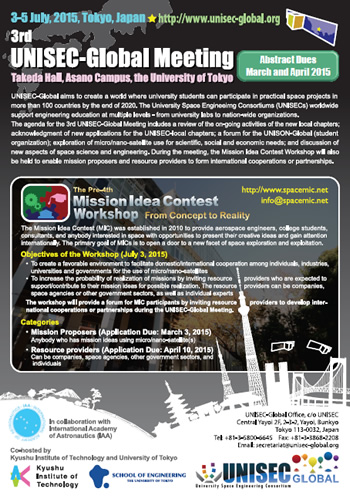
• February 4, 2015
Learn more about the Resource Provider category 
• January 28, 2015
Online registration is open!
• January 20, 2015
The overview of the Pre-4th Mission Idea Contest is released
 The Pre-4th Mission Idea Contest Workshop (Pre-MIC4) The Pre-4th Mission Idea Contest Workshop (Pre-MIC4)
- From Concept to Reality -
• January 13, 2015
Before the 4th Mission Idea Contest (MIC4), the Pre-MIC4 Workshop will be
held during the 3rd UNISEC-Global meeting in Tokyo in July 2015.
 Call for Paper Call for Paper
Pre-MIC4 Application
template for
-  Mission Proposer Mission Proposer
-  Resource Provider Resource Provider
• December 18, 2014
Please welcome our new regional coordinator: Bungo Shiotani at University of Florida, USA
• May 4, 2014
The regional seminar in Egypt is available online (in Arabic).

Contact: Ayman Kassem
• April 15, 2014
Regional seminar in Saudi Arabia on April 21, 2014
at King Fahd University of Petroleum and Minerals (KFUPM).
Contact:
Mohammed Khalil Ibrahim
• April 2, 2014
Download Introduction to 3rd Mission Idea Contest (MIC3) for micro/nano satellite utilization

• March 24, 2014
Regional seminar in Ghana on April 8, 2014
All Nations University College, Main Campus
Contact:
Manfred Quarshie
• March 15, 2014
Regional seminar in Monastir, Tunisia on March 28, 2014
During the 2nd Maghreb International Courses
in Spatial Technology
Contact:
Kamel Besbes
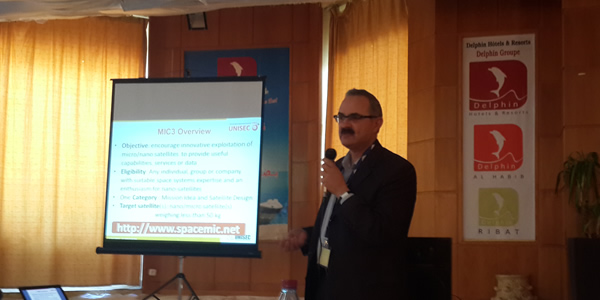
• March 15, 2014
Regional seminar at Kyushu Institute of Technology, Japan on April 4 (Fri), 2014
Contact:
John Polansky
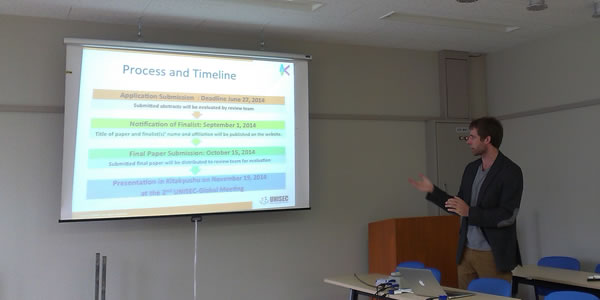
• March 7, 2014
Please welcome a new regional co-coordinator in Japan:
John Polansky, Kyushu Institute of Technology
• February 15, 2014
Please welcome a new regional coordinator in Belgium:
Ertan Umit, Von Karman Institute for Fluid Dynamics
• February 14, 2014
Call for Paper: The 2nd UNISEC Global Meeting including the 3rd Mission Idea Contest
• January 10, 2014
Please welcome a new regional coordinator in Switzerland:
Cem O. Asma
• December 5, 2013
The Pre-MIC3 workshop presentations are available online!
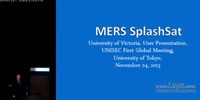
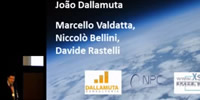
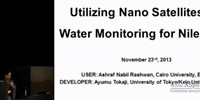
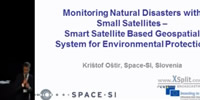
• Nov 23, 2013
PreMIC3 was successfully held on Nov. 23, 2013.
The best propsal award was given to the team of "Utilizing Nano
Satellites for water monitoring for Nile River" presented by Ashraf
Nabil Rashwan, Cairo University, Egypt and Ayumu Tokaji, University of
Tokyo, Japan.
• Nov 1, 2013
New regional co-coordinator:
Dr. Alsultan, at International Society of Photogrammetry and Remote Sensing
• Oct 23, 2013
See the criteria for
Best Proposal Award
• Oct 1, 2013
User-Developer Matching Results
Please welcome the five user & developer teams!
The selected five teams will work together and make presentation on
November 23 during the 1st UNISEC Global Meeting.
[Matching Results]
[UNISEC Global]
• Sep 24, 2013
New regional co-coordinator:
Professor Santoni, University of Rome la Sapienza, Italy
• Sep 7, 2013
We are pleased to share a wonderful news from Bulgaria.
The small satellite mission described in Bulgaria's MIC2 semi-finalist paper won the Bulgarian government grant for the implementation.
[ More ]
[ In Bulgarian ]
• Aug 23, 2013
New regional co-coordinator:
Professor Jeung, Seoul National Univ., Korea
• Aug 20, 2013
See the list of the User Needs
• Aug 20, 2013
Application of Satellite Users is closed.
Application of Satellite Developers is still open. Take a look at the list of the User Needs and select the problems you want to solve by using satellites!
• Aug 9, 2013
Online registration is now open
• Aug 4, 2013
Please welcome the Pre-3rd MIC Review Team!
• Aug 2, 2013
Please welcome the Pre-3rd MIC Regional Coordinators in the world!
• July 9, 2013
PreMIC3 Application Forms for satellite users and developers are available.
 Satellite Users Satellite Users
 Satellite Developers Satellite Developers
• July 4, 2013

Visit us on Facebook, too!
• July 1, 2013
First annoucement of Pre-MIC3
Presentations of pre-proposals for the 3rd Mission Idea Contest (Pre-MIC3) will be held during the UNISEC-Global meeting. Selected speakers will be invited to present their ideas regarding the potential utilization of micro/nano-satellites.
[Guidelines for pre-proposal]
•January 6, 2013
A Happy New Year!
The presentations of the MIC2 finalists are available online!
•December 2, 2012
The IAA book series Novel Ideas for Nanosatellite Constellation Missions was published (based on the ideas of MIC 1 finalists).
|
 |
The Mission Idea Contest (MIC) was established in 2010 to provide aerospace engineers, college students, consultants, and anybody interested in space with opportunities to present their creative ideas and gain attention internationally. The primary goal of MICs is to open a door to a new facet of space exploration and exploitation.
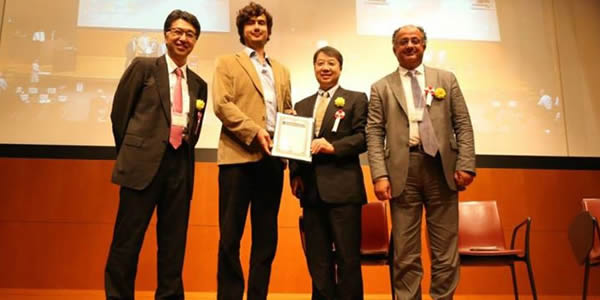
Ertan Umit (von Karman Institute for Fluid Dynamics, Belgium) won the Best Proposal Award.
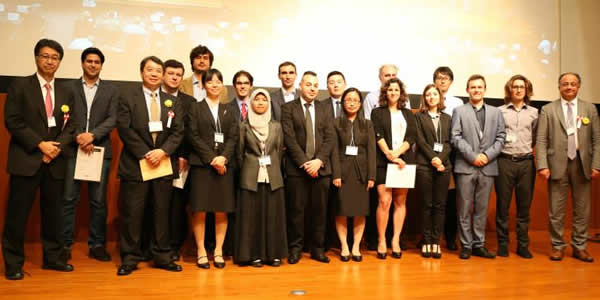
The oral presenters and reviewers for mission proposal at the 4th Pre-MIC workshop
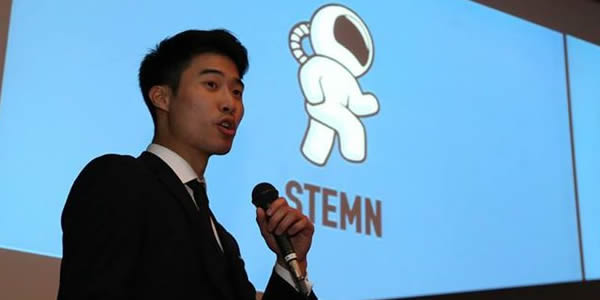
Jack Yeh (STEMN) presents as a resource provider at the Pre-MIC4 Workshop
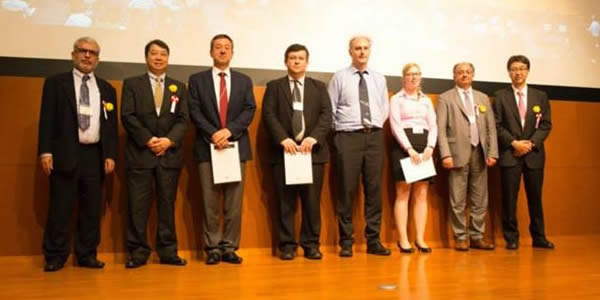
The poster presenters and reviewers for mission proposal at the 4th Pre-MIC workshop
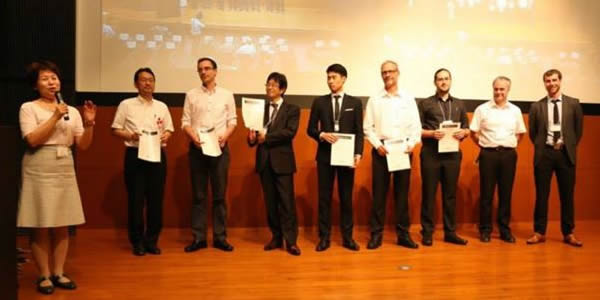
The resource providers at the 4th Pre-MIC workshop
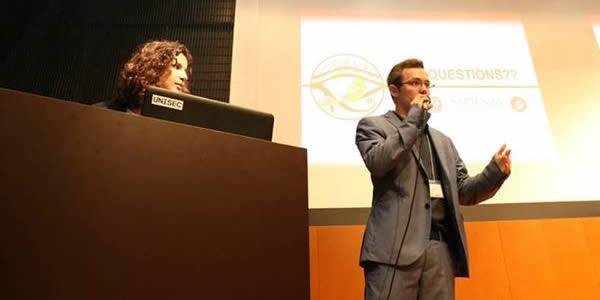
“HORUS constellation - The celestial convoy” presented by Saverio Cambioni and Alice Pellegrino from Sapienza - University of Rome, Italy
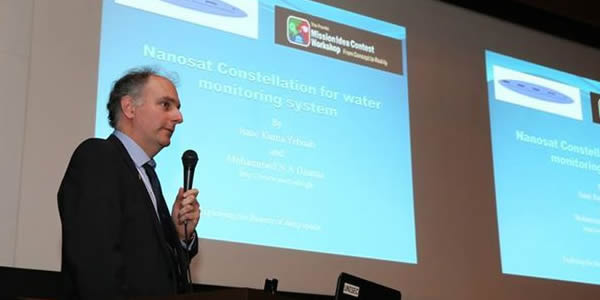
“Nanosat Constellation for water monitoring system” presented by Sean Tuttle (University of New South Wales Canberra, Australia) on behalf of Issac Kuma Yeboah (SSSRI, Ghana)
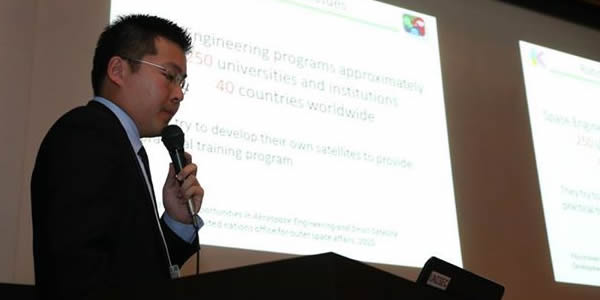
“Renting Satellite for Space Education Development” presented by Erdenebaatar Dashdondog, Kyutech, Japan
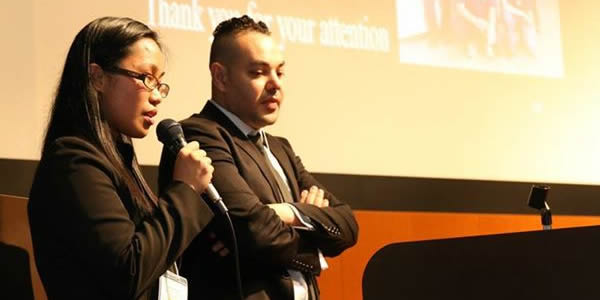
“Low-Cost Communication Network for Equatorial Remote Areas” presented by BENDOUKHA Sidi Ahmed and Adelaida C. Duran, Kyutech, Japan

Ertan Umit (von Karman Institute for Fluid Dynamics, Belgium) won the Best Proposal Award.
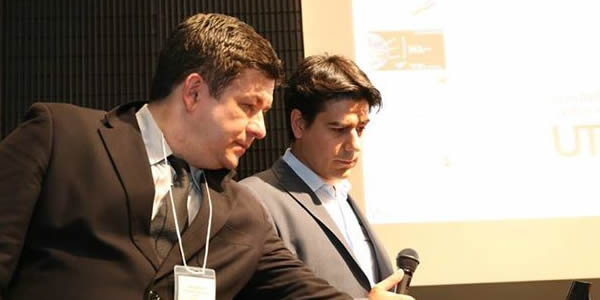
“Newton Small Space Telescope” presented by Joâo Dallamuta (Brazil) and Marcello Valdatta (Italy)

MIC Reviewers
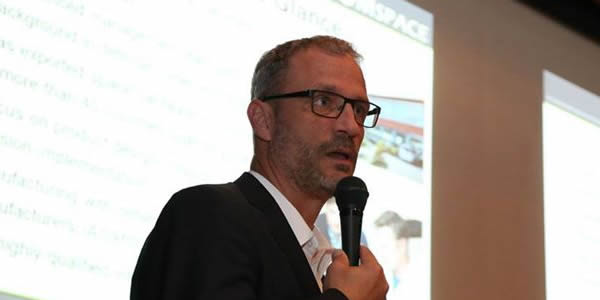
Dennis Elgaard (GOMSpace Aps) presents as a resource provider at the PreMIC4 Workshop
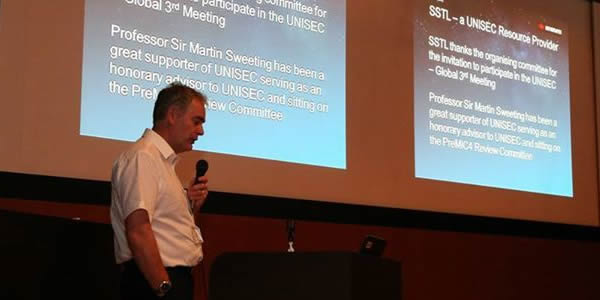
Tom Lacey (SSTL) presents as a resource provider at the PreMIC4 Workshop
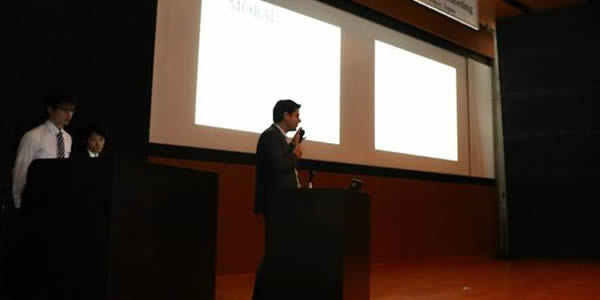
Marcello Valdatta (NPC Spacemind) presents as a resource provider at the PreMIC4 Workshop
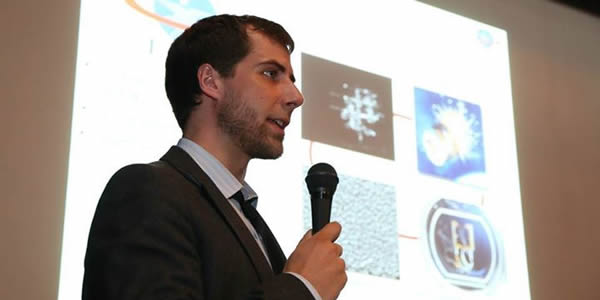
John Polansky (Kyutech) presents as a resource provider at the PreMIC4 Workshop
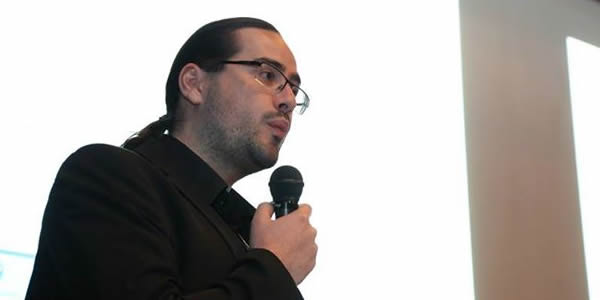
Steven Engelen (Hyperion Technologies) presents as a resource provider at the PreMIC4 Workshop
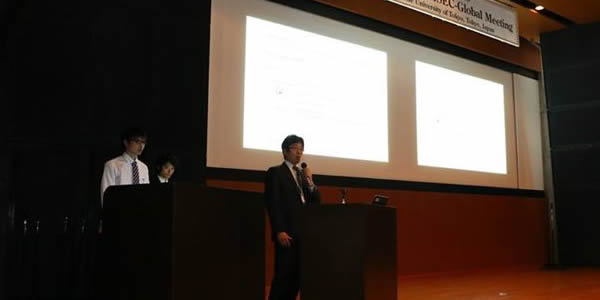
Shigeki Kuzuoka (Satellite Business Network) presents as a resource provider at the PreMIC4 Workshop
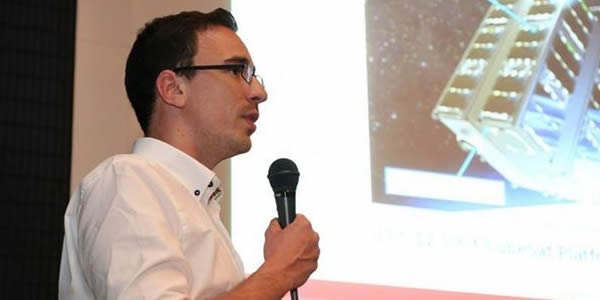
Julien Hennequin (Innovative Solutions in Space B.V.) presents as a resource provider at the PreMIC4 Workshop
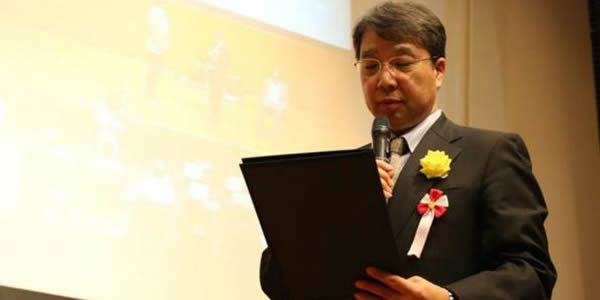
Prof. Hiroshi Kawahara announces a winner at the award ceremony
Presentations
Resource Providers
Several organizations and individuals are under consideration. They will be introduced as soon as we receive their confirmation.
Oral Presenters of Pre-4th Mission Idea Contest Workshop
Mission Proposers
Alice Pellegrino
Italy

 Slides Slides
 Movie Movie
|
HORUS constellation - The celestial convoy
Nowadays small satellites are widely used for Earth Observation applications. CubeSat constellations can improve low-cost environmental monitoring well as track natural disasters with a resolution of few meters and daily revisit capability.
The main missions use a nadir-pointing sensor, not always able to quantify atmospheric properties. In order to obtain these data, an off-set nadir sensor is necessary, providing a multiple angle observation. This architecture scheme is similar to the MISR sensor (Multi-angle Imaging SpectroRadiometer), successfully tested on NASA EOS Terra satellite (total mass 5,190 kg). In this context, we propose a nano-MISR technology on a CubeSats constellation. Usually MISR sensor is based on nine individual cameras observing Earth with different discrete view angles: one at nadir, plus eight other symmetrical views at 26.1, 45.6, 60.0, and 70.5° forward and afterward of nadir [1]. The HORUS constellation concept represents an innovation as it can guarantee high sampling capability with moderate cost, by virtue of its multi-angles robust technology and software intelligence.
|
Erdenebaatar Dashdondog
Japan

 Slides Slides
 Movie Movie
|
Renting Satellite for Space Education Development
The constraints in satellite development have a lot of influence in developing countries and other non-space faring countries in the world. To increase the access to orbit educational space development and reduction of space debris, a rental satellite for education could provide access to space for many educational institutions with one satellite, one debris.
In order to bridge the gap to continuously engage the space community to advance knowledge and practical skills in space education development, this mission idea shall provide a low-cost and efficient approach to open up information about space to the masses.
|
BENDOUKHA Sidi Ahmed
and
Adelaida C. Duran
Japan

 Slides Slides
 Movie Movie
|
Low-Cost Communication Network for Equatorial Remote Areas
Communication is very crucial for daily life. Networks enable us to communicate with each other, share world and regional news, and notify others about emergency situations. Wired and mobile communications are generally the fastest and easiest mechanisms for these purposes. However, these terrestrial communications have some limitations in terms of coverage.
Several regions in the world still encounter problems with connection. Most of these regions are located in remote areas of developing countries, particularly in the Equatorial Region. One viable solution is a communication network via satellite. Using this system, users can enjoy untethered mobile communication anywhere within the footprints of the satellite. In addition, satellite networks have much simpler delivery paths or topology that results in more manageable network performance. Current satellite communication systems provide relatively good quality services such as voice, messages, and internet. However, the acquisition of these services is relatively high in cost, above which most developing countries can afford. Hence, a low-cost satellite communication network that can provide SMS and MMS service for developing countries in the Equatorial Region is proposed. This research will demonstrate the efficiency of the system depending on the 1) number of satellites, their orbital parameters and beam width of the antenna, 2) number of ground stations and their locations for supporting the operability of the constellation, and 3) the capacity of the network and the number of potential users.
|
Ertan Umit
Belgium

 Slides Slides
 Movie Movie
|
QARMAN: QB50 QUBESAT FOR AEROTHERMODYNAMIC RESEARCH AND MEASUREMENTS ON ABLATION
QARMAN (Qubesat for Aerothermodynamic Research and Measurements on AblatioN) is a 3U CubeSat designed to collect scientific data during re-entry to Earth atmosphere. QARMAN is a Von Karman Institute (VKI) project, funded by the European Space Agency and developed in cooperation with the University of Liege: it will be launched in 2016 within the QB50 framework.
QARMAN will be launched into LEO (<400 km) where the atmospheric effects are not negligible therefore are in VKI’s domain of interest.
The first mission is the “Semi-controlled differential-drag-based maneuvers”, which aims to control the surface exposed to the residual atmosphere, changing the magnitude of the atmospheric drag and therefore creating a (differential) force, between one spacecraft (chaser) and either another spacecraft or a desired target point. This is practically a semi-passive formation flying demonstration.
The second mission is the “Aerodynamic Stability and De-orbiting”, which is the passive stabilization system. This is the part where the attitude of the spacecraft will be passively controlled for a safe descend and atmospheric entry.
The third and the major mission of QARMAN is to demonstrate the use of a CubeSat platform as an atmospheric entry vehicle. The spacecraft will re-enter the earth atmosphere, while measuring and logging valuable information for aerothermodynamic research.
|
João Dallamuta
Brazil

 Slides Slides
 Movie Movie
|
Newton Small Space Telescope
Space telescopes are powerful tools for astronomical research, however its cost and complexity restricting its use only for a few space agencies.
It is a similar situation to telecommunications satellites in the early years of the space age, expensive, complex and restricted. Amateurs initiative like OSCAR satellite series allowed a gradual increase of complexity in the following years. This proposal is similar in philosophy to the OSCAR program. Intends to initiate a series of amateur space telescopes that will spread among amateur astronomers. A small space telescope, 95mm diameter, built with COTS philosophy can serve as proof of concept for future more complex missions.
|
Sean Tuttle (on behalf of Issac Kuma Yeboah)
Ghana

 Slides Slides
 Movie Movie
|
Nanosat Constellation for water monitoring system
There are millions of people around the world living in communities near water bodies which serve as a source of generating income, nourishment and lively hood. Yet these communities are prone to dangers such as flooding and drought, a few of such communities include those along the Volta basin which extends from Ghana and to other parts countries shown in figure 1.
Recently in Ghana the Volta Lake flooded and destroyed some communities along its bank, the same lake suffered from a drought in 1970. Unfortunately the communities around the Waija Lake near greater Accra are at the mercy to the same sort of danger like the people of Volta Lake communities are facing. The devastation caused by floods is largely due to the lack of preparedness of the communities to evacuate early during flooding during raining and spilling of Burkina Faso Dams. No comprehensive monitory system dedicated to the Volta Lake and rivers in the Volta region, inadequate financial resource, and the lack of data collection are contributing factors to these problems.
|
Poster Presenters of Pre-4th Mission Idea Contest Workshop
Mission Proposers
Samar ElDiary
Egypt
|
Utilizing Nano Satellites for Early Prediction of Earth Surface Disturbances |
Courtney Bright
Australia |
VAPR: Venus Atmospheric Pathfinder Research Vehicle
|
Mahmoud El-Mohr
Egypt |
Landmines Mapping Satellite
|
Asmaa Saleh
Egypt |
Project of Nano-Satellite Constellation Providing Near Real-time Internet Coverage To Isolated Communities For Human life Promotion and Educational Purposes -Schools From The Sky
|
João Dallamuta
Brazil |
THOR - Lightning detection with CubeSats
|
Chafaa Hamrouni
Tunisia
|
Intelligent small satellite development for Olives Forest Fire Detection |
Ahmed Abdelmaksoud
Egypt |
Generating solar energy using nano satellites based on smart grid and cloud computing
|
Kwasi Poku-Agyemang
Ghana |
Observational Nano Satellite System: To Detect Oil Spills
|
Sedat NAZLIBİLEK
Turkey |
ASELSAT
|
Objectives
-
To create a favorable environment to facilitate domestic/international cooperation among individuals, industries, universities and governments for the use of micro/nano-satellite.
-
To increase the probability of realization of the mission by inviting resource providers who are expected to support/contribute to their mission ideas for possible realization. The resource providers can be companies, space agencies or other government sectors, and individual experts.
The Pre-MIC4 Workshop will provide a forum for MIC participants by inviting the resource providers to develop international cooperations or partnerships.
Categories
Important Dates
| January 13, 2015 |  Call for Paper Call for Paper |
March 3
March10, 2015 | Application due (Mission Proposers)
|
April 10
April 27, 2015 | Application due (Resource providers) |
| July 3, 2015 | Pre-MIC4 Workshop |
|









